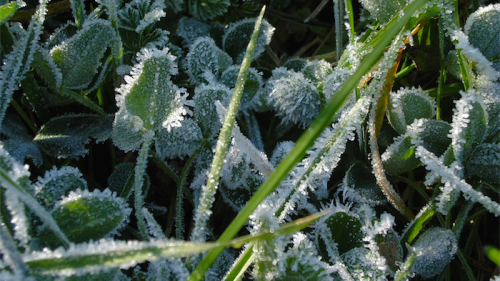 DESPITE the warm days and nights, one thing is certain; the chances of getting caught out by a sharp, unexpected frost are very high.
DESPITE the warm days and nights, one thing is certain; the chances of getting caught out by a sharp, unexpected frost are very high.
With this in mind, here are a few suggestions to be ready before the frosts arrive:
- When not using garden hoses, disconnect them and place them out of the weather.
- Likewise, tap timers. The body of the timer is usually full of water that, with frost, will shatter the plastic.
- The same for sprinklers used on the end of hoses.
- It’s a good idea to use foam pipe protector (available from DIY stores) for any exposed pipes up to the tap.
- Obviously, any plants in containers that may be frost sensitive to move under cover. This may simply mean moving them under the eaves or into the carport. However, remember these plants won’t be watered when it rains.
- For plants in larger containers, such as lemon trees, that are impractical to move, insert four tomato stakes in the ground around the container and make a cover of 90 per cent shadecloth or hessian. Ideally, the shadecloth can be fixed to the stakes around the sides but removable on the top. Take the top cover off during the day and cover over in the afternoon. But don’t forget, because Jack Frost won’t!
IN the general garden if you have a good-quality lawn don’t walk on it when frost is on the ground.
If there has been a heavy frost, hose it off shrubs in the morning before the sun hits the plants.
As leaves continue to fall rake them off lawns and the tops of low-growing hedges such as Buxus.
If left, they can encourage unwelcome diseases such as mildew and mould. The weight of leaves can kill sections of hedge.
Under no circumstances rake leaves into road gutters. In heavy rain they will be washed into the stormwater system and ultimately end up in our lake system, the result is blue green algae.

From a chance camellia seedling… the Priscilla Rose.
More recently, I showed the flowers to Barry de Salvia, of Leeton, a guest speaker and expert on camellias at an Horticultural Society meeting.

De Salvia was unable to name it and asked to see the plant in our garden. The origin is possibly a chance seedling of Camellia hiemalis “Shishigashira” with similarities such as its weeping habit and flower colour.
Further research by the Camellia Society, over a period of more than two years in different seasons, concluded this was a new sasanqua-type camellia.
It has a long, free flowering from mid-May to late July with rose-pink, informal, semi-double flowers, which tend to stay on the bush after they are spent.
It has a low-growing, spreading weeping habit with dark-green foliage to about a metre high, growing in part shade to more sun.
I have named the new species Camellia hiemalis “Priscilla Rose” in memory of my sister who died from cancer in 2008. Proceeds from the sale of the new camellia will be donated to the Kids with Cancer Foundation with limited numbers offered for sale at the Heritage Nursery over Easter.
Jottings…
- Plant Polyanthus and Primulas, neither are affected by frost. However, the snails love them, so use the safer-for-pets certified organic Multicrop Snail and Slug Killer.
- Compost leaves.
- Consider buying an indoor mushroom-growing kit for harvesting through winter.
Who can be trusted?
In a world of spin and confusion, there’s never been a more important time to support independent journalism in Canberra.
If you trust our work online and want to enforce the power of independent voices, I invite you to make a small contribution.
Every dollar of support is invested back into our journalism to help keep citynews.com.au strong and free.
Thank you,
Ian Meikle, editor




Leave a Reply